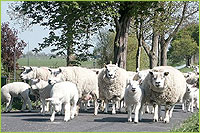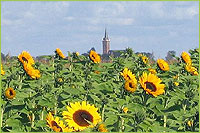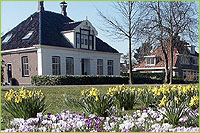| |
 |
|
The Beemster Polder
The distinctive Beemster landscape with its strict rectangular pattern of land division
and unusual history is the only one of its kind in the world. By designating it a World
Heritage
site in 1999, UNESCO recognized the value of the Beemster Polder and made
it clear that future generations must also be able to enjoy it. Between 1607 and 1612,
a total of
42 mills succeeded in reclaiming land in an area that used to be an inland
sea and 3.5 meters below sea level.
Land division
The Beemster Polder is a masterpiece of creative planning, in which the 17th-century
ideals can still be seen in the design of the landscape, as well as a superb example
of the conflict man has waged with the water. The reclamation of the polder was
completed in 1612. The new land was 3.5 meters (11 feet) below sea level and turned
out to be fertile clay. It was parcelled out in a rectangular grid, reflecting the 17th-century ideal of the harmonious relationship between man and his environment. The long
rectangular plots, which were leased to arable and stock farmers, were just the right size.
Stately mansions and country estates
The name of Jan Adriaanszoon Leeghwater will always be connected to the reclamation
of the Beemster polder, but without the financing of the rich VOC merchants, the project
would have never happened. Realizing the fertility of the new land and the beauty of
the open landscape, the merchants built stately mansions and country estate in the new polder.
Unique experience
Once water, now land. The never-ending battle with the sea and the Dutch conquest has
put Holland on the map. The rich history and distinctive pattern of land division are unique throughout the world and make a visit to the Beemster Polder one you won't easily forget.
©Nederlands Bureau voor Toerisme & Congressen 2004
|





